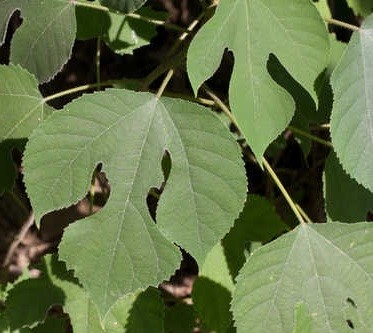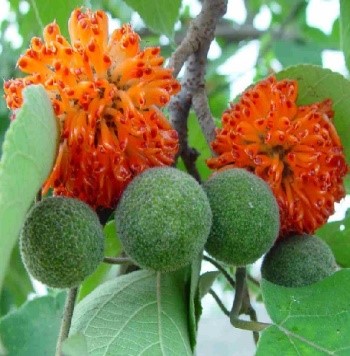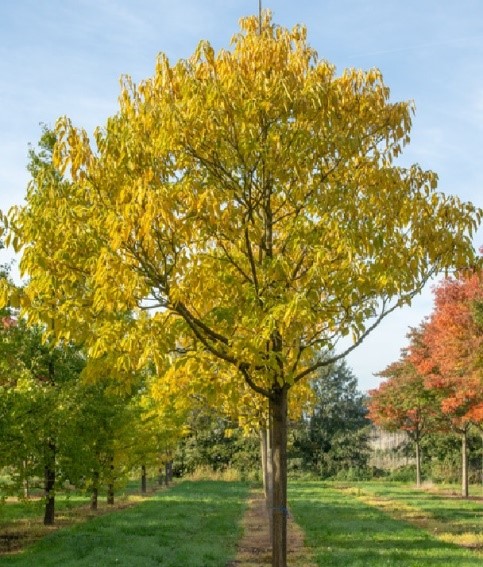Trees
Broussonetia papyrifera (L) L. Hertit. Ex Vent.
Broussonetia papyrifera (L) L. Hertit. Ex Vent.
Description :
A medium, deciduous tree. 3 to 12 m tall. The crown is spreading and
rounded. The leaves are simple, but varied in shape, 5 to 20 cm long. The bark
is light grey with shallow ridges or fissures. It is dioecious. The reddish
yellow male flowers are in small catkins. The reddish to orange red female
flowers are in solitary, rounded heads 2 to 3 cm in diameter, and occur between
March and August. The fruit is a berry containing 5 to 15 small seeds which
ripen between May and September. It coppices easily and aggressively occupies
shady sites. It is relatively insect and disease free. It is reproduced both
from seed and by vegetative means. The seeds are small. Birds eat the berries
and hasten the tree's rapid spread. It grows very fast, 1 m a year in height
growth is not uncommon. Diameter of 15 cm has been recorded in a 5-year period.
However, because of its aggressive nature, care is needed when recommending
planting as there is a possibility of it escaping attention, spreading from
seed & root suckers and becoming a weed. It is also being labelled as an
allergen causing cold, sneezing and cough. Sapwood is greyish white; heartwood
is light brown with Calorific value of 5100 kcal/kg, having Straight Grains.
Distribution :
A native tree of Japan, Southeast
Asia and China. In Pakistan it is successfully planted and established in the
plains and hills. It has been planted successfully in many other parts of the
world. It has become a weed in Islamabad and measures are being taken to
eradicate it. A tolerant tree that does very well in shade. It grows on a
variety of well drained, rich soils, but will not grow well on poor sites. It
requires a precipitation zone of 700 to 2000 mm/yr or more. It prefers a
sub-humid warm, sub-tropical monsoon climate with a temperature range of 0 to
40°C on elevations up to 900 m.
Uses :
This is a good tree for
reforestation projects because of its fast growth and its suitability on dry
hillsides. It may have potential as a farm forestry tree. Fodder, bark (for
pulp, tapa cloth), erosion control, furniture, boxes and packing crates, sports
equipment, and veneer and plywood are multiple uses of this tree.



